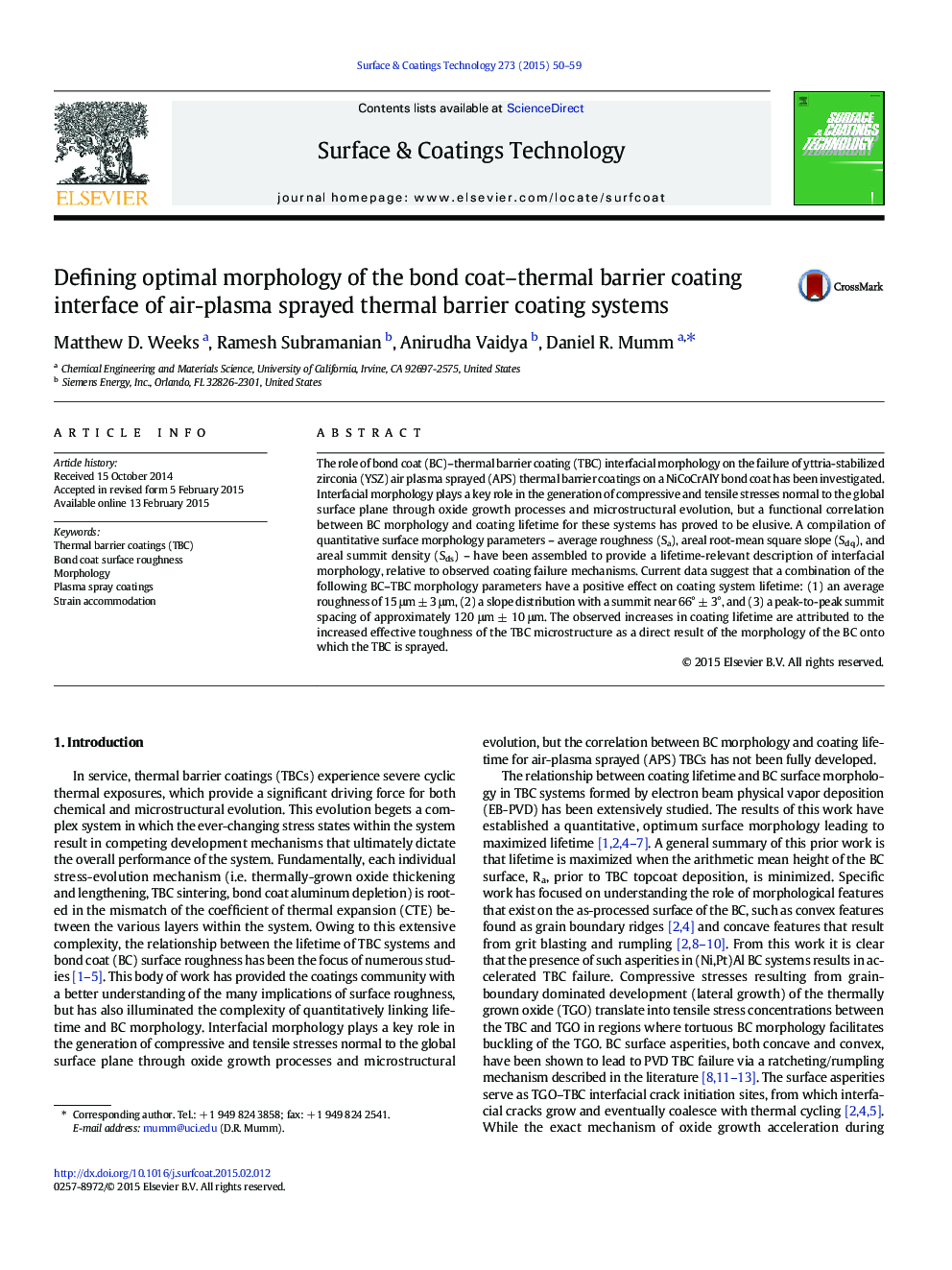| Article ID | Journal | Published Year | Pages | File Type |
|---|---|---|---|---|
| 1657057 | Surface and Coatings Technology | 2015 | 10 Pages |
•The role of bond coat morphology in APS TBC system lifetime is explored.•Lifetime-relevant BC morphology is quantified via optical confocal microscopy.•Amplitude, slope, and summit density parameters are correlated with TBC lifetime.•Unique combinations of roughness amplitude, slope, summit density optimize lifetime.•TBC durability is correlated with BC–TBC interface morphological optimization.•Specific BC morphology upon which coatings are applied affects local TBC compliance.
The role of bond coat (BC)–thermal barrier coating (TBC) interfacial morphology on the failure of yttria-stabilized zirconia (YSZ) air plasma sprayed (APS) thermal barrier coatings on a NiCoCrAlY bond coat has been investigated. Interfacial morphology plays a key role in the generation of compressive and tensile stresses normal to the global surface plane through oxide growth processes and microstructural evolution, but a functional correlation between BC morphology and coating lifetime for these systems has proved to be elusive. A compilation of quantitative surface morphology parameters – average roughness (Sa), areal root-mean square slope (Sdq), and areal summit density (Sds) – have been assembled to provide a lifetime-relevant description of interfacial morphology, relative to observed coating failure mechanisms. Current data suggest that a combination of the following BC–TBC morphology parameters have a positive effect on coating system lifetime: (1) an average roughness of 15 μm ± 3 μm, (2) a slope distribution with a summit near 66° ± 3°, and (3) a peak-to-peak summit spacing of approximately 120 μm ± 10 μm. The observed increases in coating lifetime are attributed to the increased effective toughness of the TBC microstructure as a direct result of the morphology of the BC onto which the TBC is sprayed.
